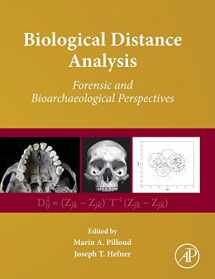
Biological Distance Analysis: Forensic and Bioarchaeological Perspectives
Book details
Summary
Description
Biological Distance Analysis: Forensic and Bioarchaeological Perspectives synthesizes research within the realm of biological distance analysis, highlighting current work within the field and discussing future directions. The book is divided into three main sections. The first section clearly outlines datasets and methods within biological distance analysis, beginning with a brief history of the field and how it has progressed to its current state. The second section focuses on approaches using the individual within a forensic context, including ancestry estimation and case studies.
The final section concentrates on population-based bioarchaeological approaches, providing key techniques and examples from archaeological samples. The volume also includes an appendix with additional resources available to those interested in biological distance analyses.


We would LOVE it if you could help us and other readers by reviewing the book
Book review




